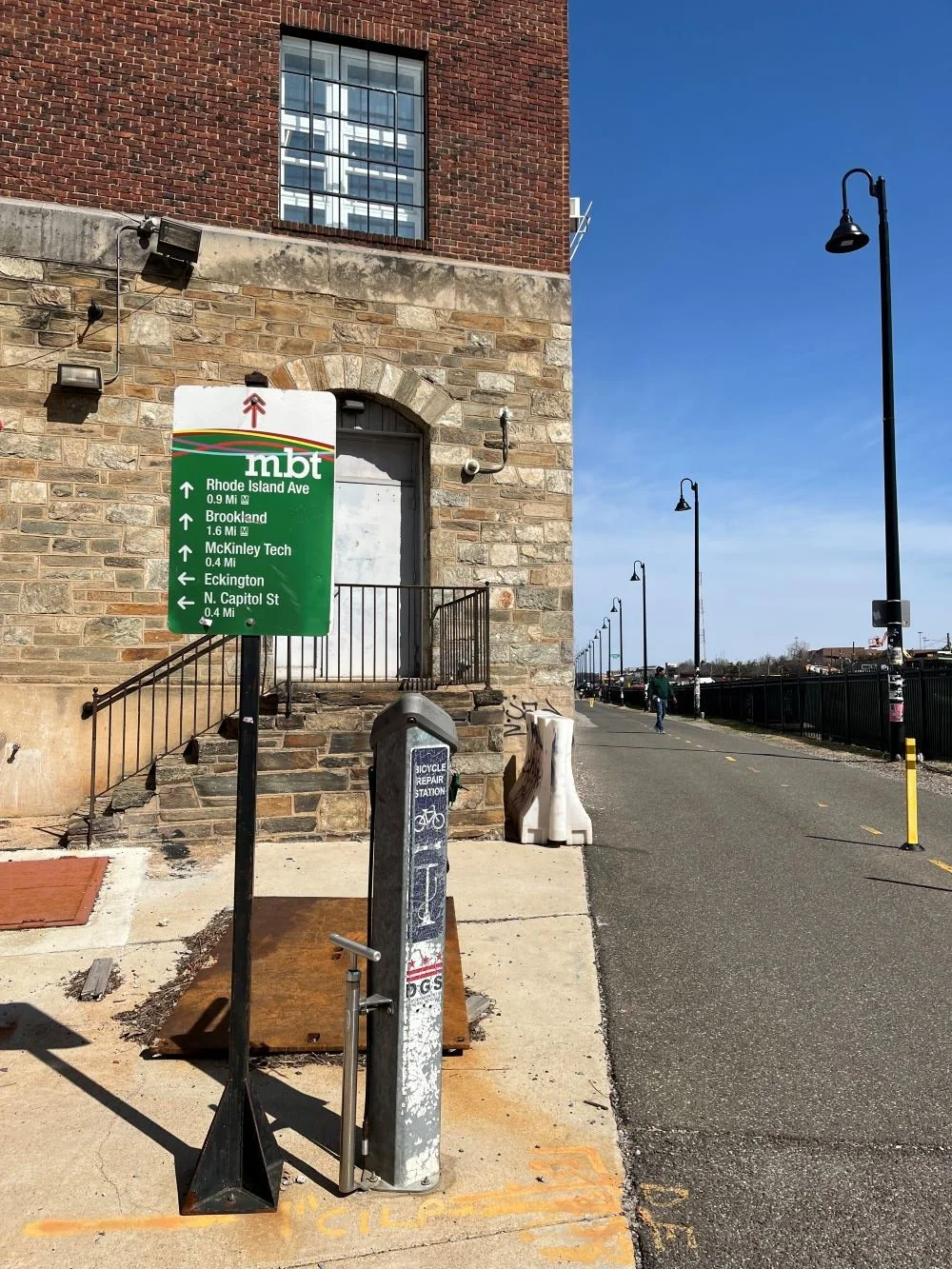Washington Area Bicycle Association
Every day, over 10,000 residents and visitors use trails in DC to get around, exercise, and spend time outside.1 The Metropolitan Branch Trail (MBT), which runs through various neighborhoods in DC, is an especially popular trail that can become crowded during peak hours. Denser crowds and faster e-bikes and e-scooters present an increased risk for collisions and injuries on shared-use trails. The Lab and the District Department of Transportation are working together to ask trail users for their ideas on how to reduce the risk of collisions and promote safety on the MBT. We will also test how a sign that encourages speeders to slow down affects behavior. The findings from both research activities will inform how the District encourages slower speeds to promote safety on the MBT and across its multi-use trail system.
MBT navigation sign (Photo credit: The Lab @ DC)
Why is this issue important in DC?
As DC continues investing in a connected and accessible transportation network, trail safety is a top priority. Multi-use trails like the MBT may offer a more comfortable or direct alternative to roads. More than two thousand trips take place on the MBT each day.
2
Since 2020, the number of e-micromobility vehicles—e-bikes and e-scooters—have increased on the MBT. These vehicles are faster and heavier, raising the risk of collision and injury, especially during peak hours. Crashes can also happen when trail users are distracted or don’t follow trail etiquette. Promoting safer speeds helps everyone—whether they walk, bike, or roll—feel more comfortable and confident using the trail.
What are we doing?
On the trail and at community events, we are asking trail users to brainstorm ways to encourage all users to travel on the trail safely at busy times. We will select one or two solutions to refine and test.
One idea that we plan to pilot is a speed feedback sign. The sign will track user speeds and show a message to encourage slower speeds before entering narrow or high-congestion points. We will measure vehicle speeds before and after installation at different parts of the trail to understand its effects. This is not an enforcement initiative, and the District is not implementing a speed limit on the trail. We will also talk with trail users to learn how the sign shapes their experience.
What have we learned?
We expect results from our rapid brainstorming sessions in late 2025. We expect results from our pilot using the speed feedback signs in 2026.
What comes next?
The results of this project may guide how the District encourages safer speeds on the MBT and other trails. DDOT and The Lab view this as part of a broader effort to promote collective responsibility for trail safety among all users.
What happened behind the scenes?
We have spoken with many government agencies and community and business groups to guide our efforts. We are working with the
Washington Area Bicycle Association (WABA) Trail Rangers
, who are on the MBT every day, to understand what challenges they see and how best to design solutions with trail users.
We have also spoken with other jurisdictions that are also using speed feedback signs on shared use paths. In 2024, the Massachusetts Department of Transportation (MassDOT) tested and scaled up speed feedback signs on their shared use paths.3 We spoke with researchers from MassDOT about their successes and challenges with these signs to help design our pilot.
1
BikePed Portal. District of Columbia. Accessed October, 2025.
2
DC Automated Bicycle and Pedestrian Counters. Accessed October, 2025.
3
Sharing the shared use path. The Lab @ MassDOT. Accessed October 2025

